SNES Classic Omissions
Top 10 Best Games Not on the SNES Classic Edition!
For reasons I cannot fully comprehend, Nintendo was caught off guard by the success of the NES Classic Edition. The SNES Classic Edition was cut from the same cloth as its predecessor, but it obviously included classic games from the 16-bit generation. The system was bundled with two replica SNES controllers and had options that weren’t present on the previous year’s model (including a rewind feature), but it only came with 21 games installed instead of the 30 the NES Classic Edition had. In fairness, many of the best games of all-time were featured on the system and the inclusion of StarFox 2 – which was slated for release in 1995 before being cancelled in the 11th hour – was completely unexpected. I don’t have any major issues with any of the titles that were included, but there were obviously a number of games that I think should have made the cut. Without further ado, let’s take a look at the ten games I felt were most noticeably absent from the SNES Classic.
10
SimCity
1991
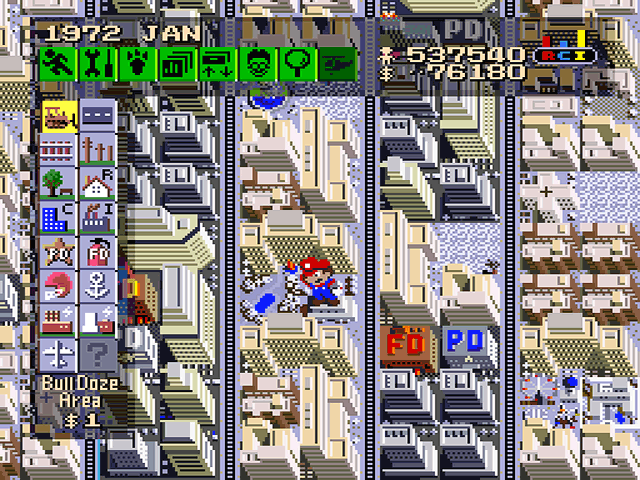
SimCity is a revolutionary strategy game that tasks players with designing their own city. You’ll need to supply power, establish a transportation system, keep the crime rate low, manage disasters, and achieve balance among your residential, commercial, and industrial properties. While SimCity is an easy-going game with no time limit and no definitive objective, there are also several scenarios for more goal-orientated individuals. These scenarios include tasks ranging from managing traffic problems to fending off alien attacks. The SNES version stays very faithful to the PC original, and navigating through various menus with the gamepad is surprisingly intuitive. The SNES version also has several new features that weren’t present on the PC – like changing seasons, new scenarios, and a helpful adviser name Dr. Wright who will periodically give you advice. More significantly, this version also introduced the concept of reward properties such as casinos, amusement parks, libraries, and zoos. Nintendo apparently couldn’t resist putting their own mark on the game, so the generic Godzilla-inspired monster was replaced with Bowser, and players would be rewarded with a giant Mario statue when their city became large enough. SimCity spawned over a dozen sequels and spinoffs, but none captured the same beautiful simplicity. The SNES version of SimCity remains my favorite game in the entire series, and it’s completely different than any game on the system.
9
Mega Man 7
1995
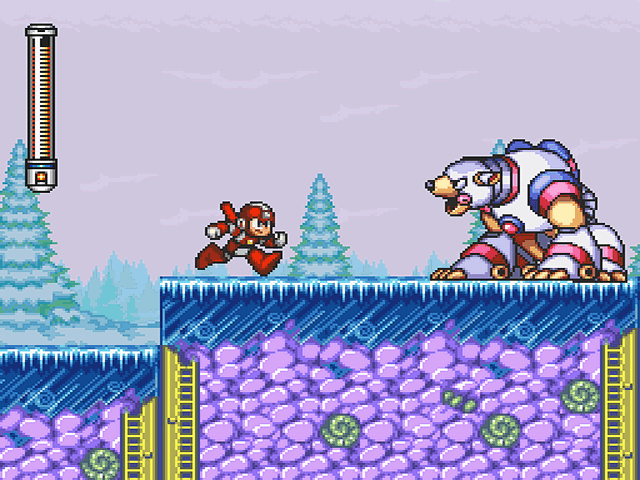
Mega Man X brought the series into the 16-bit era, but Mega Man 7 felt like an unexpected visit from an old friend. As much as I enjoy Mega Man X, I also appreciate the classic flavor of Mega Man 7. The colorful graphics and rocking soundtrack perfectly capture the feel of the classic NES games, and the gameplay is exactly what you’d expect. There are eight robot bosses to conquer, and you will gain the ability to use their weapons after defeating them. This time around, though, the weapons you find are used for more than just battling enemies. The ice weapon can be used to freeze flowing lava, the electric weapon can power machinery, and the fire weapon can burn down trees. You’ll also have the opportunity to buy new equipment, and there are several optional upgrades to attain. Your robotic bird sidekick, Beat, will carry you to safety if you fall off a cliff, the Rush suit from Mega Man 6 returns and gives you the power of temporary flight, and Protoman’s shield can be used to deflect attacks. The levels are full of secrets to find and Capcom buried several Easter eggs in the game – including a two-player versus mode and remixed music from Ghosts ‘n Goblins. It’s unfortunate that many overlooked this sublime game in 1995 because they were focused on the next wave of consoles.
8
Teenage Mutant Ninja Turtles IV
1992
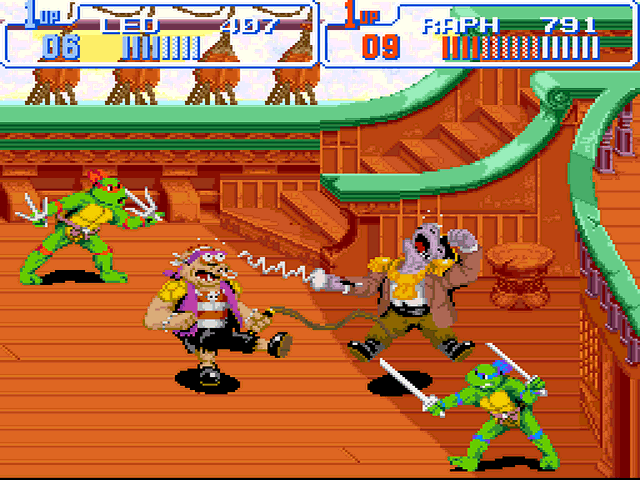
I know licensing can be tricky, but the SNES Classic is in dire need of a great two-player beat ’em up, and Turtles in Time would have been the perfect game to fill this void. The best thing about the game (aside from the Ninja Turtles license, of course) is the number of attacks the player can perform. They can drop kick their enemies from across the screen, mow them over with a running charge, bash them back and forth like a rag doll, or even throw them towards the screen! Additionally, each of the four turtles has their own special move. The stages in the game include many of the usual Ninja Turtle locales – like sewers, alleys, and the Technodrome – but you’ll also get to travel through time and fight through prehistoric wastelands, pirate ships, and moving trains. The levels in the TMNT games feel decidedly more interactive than those typically found in the genre. You’ll be able to knock street signs over, fall down open manholes, set off exploding barrels, and send various projectiles flying back toward your foes. With its large characters, memorable environments, and catchy tunes, Turtles in Time is one of the greatest beat ’em ups of all time.
7
Terranigma
1995
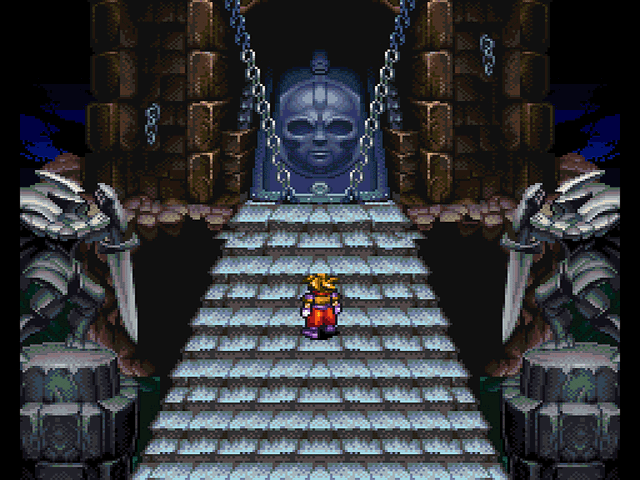
Terranigma was never released in North America, but if StarFox 2 could be resurrected, I see no reason why Terranigma couldn’t have been featured on the SNES Classic Edition. The game has already been translated into English, after all, and it was even published in PAL territories by Nintendo themselves. The third in Quintet’s unofficial trilogy of SNES adventure games, Terranigma borrows heavily from Soul Blazer and Illusion of Gaia. The game obviously looks and sounds amazing, and the dungeons remind me of Zelda. The combat is a lot more refined than most of its contemporaries, and players have jumping abilities, running attacks, and advanced guarding techniques at their disposal. The story is standard fare for the most part, but players have a massive world to explore and the game gives them the opportunity to expand towns and change the course of history. The SNES Classic Edition has action/RPGs covered with A Link to the Past and Secret of Mana, but the inclusion of Terranigma could have helped heal old wounds.
6
Zombies Ate My Neighbors
1993
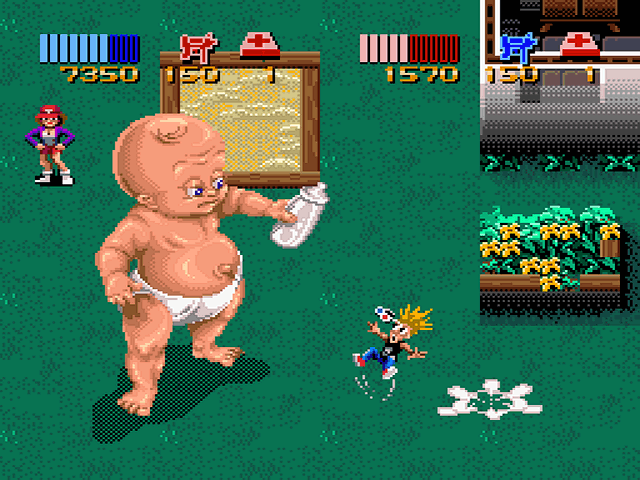
Zombies Ate My Neighbors is centered around a pair of kids who are trying to save their neighborhood from nefarious forces. Zombies, mummies, mutants, aliens, and giant babies are among the many enemies you’ll encounter in the game. To fight these monsters, you’ll have access to an array of weapons that includes everything from water pistols and weed-whackers to flamethrowers and bazookas. There is also an impressive list of items to find – like magic potions with that will temporarily transform your character into an invincible monster, or inflatable decoy clowns that can draw attention away from the victims. Resident Evil it ain’t, but that’s a good thing in this case. Zombies Ate My Neighbors is a parodical take on classic monster movies, and it’s deeply embedded with LucasArts’ trademark humor and wit. It never takes itself too seriously, and nearly every one of the game’s 50+ stages offers something different. The game is a lot more fun when you take advantage of the co-op mode, but this should go without saying at this point. Sadly, they don’t make them like this anymore. Not unlike the campy horror movies that it parodies, games that feature two player cooperative gameplay seem to be a thing of the past.
5
Rock n’ Roll Racing
1993
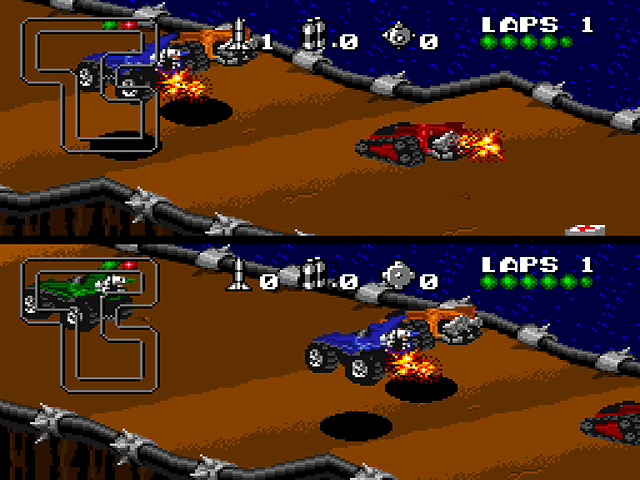
The stage is set, the green flag drops! An isometric racing game inspired by RC Pro-Am, Rock n’ Roll Racing is a cult classic from the company that would eventually evolve into Blizzard Entertainment. The game provides a variety of vehicles to buy (ranging from souped-up dune buggies to futuristic hovercrafts), and everything from the engine to your armor can be upgraded. The tracks are littered with obstacles and power-ups alike, and they are also full of speed boosts and awesome jumps that will send you flying into the air. Like most great racing games, Rock n’ Roll Racing can be played with a friend. When a second player joins in, the game rivals Super Mario Kart in terms of how fun it is. The game also happens to boast some of the best sound on the system, and an enthusiastic announcer calls the action while synthesized rock music plays in the background. There’s nothing like the feeling you get from racing space aliens and lost vikings while rocking out to classic Black Sabbath tunes.
4
Tetris Attack
1996
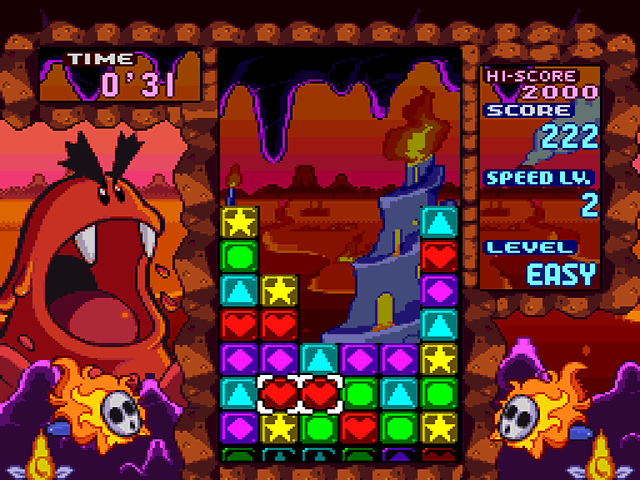
Puzzle games are criminally underrepresented on the SNES Classic Edition, and Tetris Attack would be the ideal game to represent the genre. As noted on my list of best rebranded games, Tetris Attack was known as Panel de Pon in Japan before it was given a makeover for its western release. Panel de Pon actually is included on the Japanese version of the SNES Classic, and it’s a safe bet that the Tetris license is what prevented Tetris Attack from being included on the other side of the ocean. The objective in the game is to clear blocks from the playfield by aligning them in horizontal or vertical groupings. It’s one of the most intense puzzle games ever, and the ability to chain combos together makes it a blast to play with a second player. The game becomes so fast at times that the SNES starts to slow down. (This phenomenon is typical in action games and shoot ’em ups, but it’s pretty rare for puzzle games to be so intense.) Although the game is fast-paced, players are also encouraged to plan ahead. Strategy and foresight are required if you want to compete at a higher level. I understand why Tetris Attack isn’t included on the SNES Classic, but it’s a glaring omission nonetheless.
3
Donkey Kong Country 3
1996
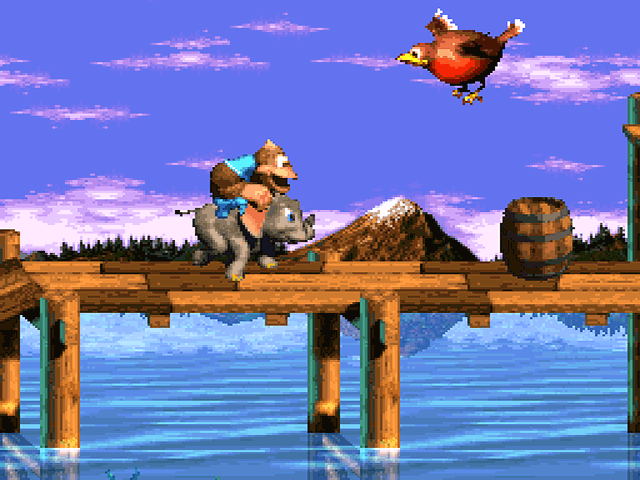
The final game in the Donkey Kong Country trilogy is also the most underrated game in the series. There are a few reasons why people tend to overlook the game. It was released after the Nintendo 64 launched, so it didn’t necessarily have the same “wow factor” that its predecessors did. As the industry was breaking new ground with immersive 3D worlds, side-scrolling games were yesterday’s news. While I always appreciated the game, I felt it was a step down from Diddy’s Kong Quest. Kiddy Kong was a lumbering ape, and I missed the quickness of Diddy Kong. Also, I think the jungle theme of the original and the pirate theme of the sequel resonated better than the randomness that the third game brought. There wasn’t really a central theme in Donkey Kong Country 3 at all, but this gave the game’s developers tremendous creative freedom. Seemingly every stage in the game featured a new gameplay mechanic. One stage required players to carry barrels over their heads to protect themselves from lighting strikes. Another stage played out like a makeshift stealth game as players assumed the role of an elephant and had to avoid rats. On the flip side, the stages were slower-paced and lack the kinetic forward motion that had defined the series up to this point. Despite its flaws, Donkey Kong Country 3 was one of the best late-era SNES games. It sold less than half of what the first game in the series did, so the SNES Classic Edition could have introduced legions of DKC fans to the game for the first time.
2
Donkey Kong Country 2
1995
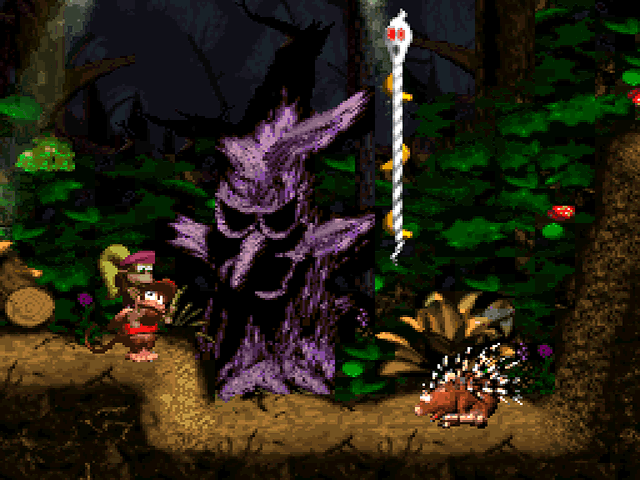
Donkey Kong Country is already included on the SNES Classic Edition and I’ve just made the case for why Donkey Kong Country 3 should have been included as well, so it would be pretty ridiculous if I neglected to mention the best game in the trilogy. The first Donkey Kong Country was considered revolutionary in 1994 and picked up numerous Game of the Year awards, but the sequel improved upon it in every way imaginable. I didn’t think it was possible at the time, but the graphics and music were even better than the original’s. The game also seemed to have more personality, and the pirate theme made everything more exciting. On a less superficial note, the gameplay was also refined in meaningful ways. There was more variety in the stages, and new gimmicks were being introduced all the time. Whether you were being carried away by powerful drafts in a mine shaft or trenching through honey-filled bee hives, you were never sure what to expect next. The developers also cranked up the difficulty for the sequel, and the hidden stages put a spotlight on how responsive the controls were. Donkey Kong Country 2 is the fastest game in the series, and it’s one of the few platformers that can give the best Super Mario games a run for their money.
1
Chrono Trigger
1995
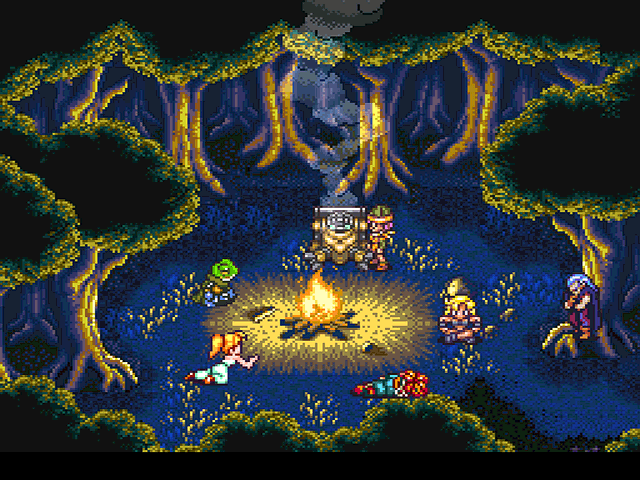
Chrono Trigger earned the top spot on my list of best SNES games, so it’s no surprise it would take the number one position on this list as well. From a technical standpoint, the game boasts some of the most impressive visuals on the SNES and its soundtrack is a fantastic showcase for how versatile the system’s sound chip was. The characters were well-written, the story was filled with exciting plot twists, and the battle system was legitimately fun. The game doesn’t have random battles like most JRPGs of the era do, and players are often able to avoid them altogether. Ironically, the battles were so engaging that I didn’t want to skip them! Players have to be mindful of the positioning of enemies, and the inclusion of team moves provides incentive to experiment with different party members. The time travel gimmick gives players a tremendous amount of freedom, and the adventure is a lot less linear than most games since there are so many optional side quests and numerous ways for the game to end. Chrono Trigger was developed by a “Dream Team” that included Hironobu Sakaguchi (the father of Final Fantasy) and Yiji Hori (the man behind Dragon Quest), but it’s arguably the best game that either individual has ever worked on.

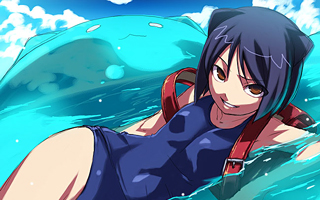
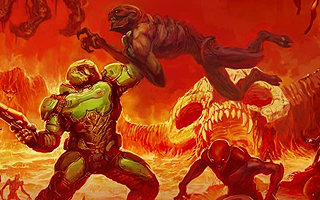
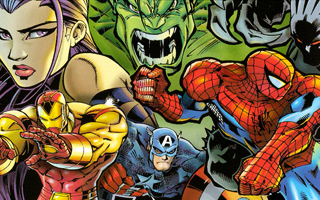
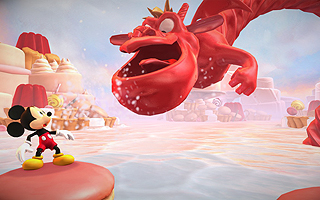
Do you agree with this list? Let us know what you think by leaving a comment below. Your opinion matters!